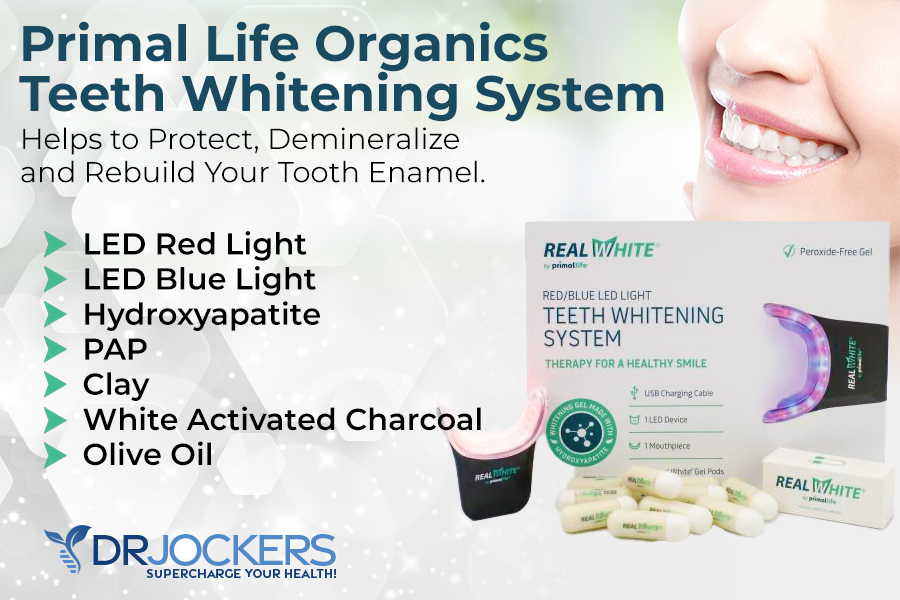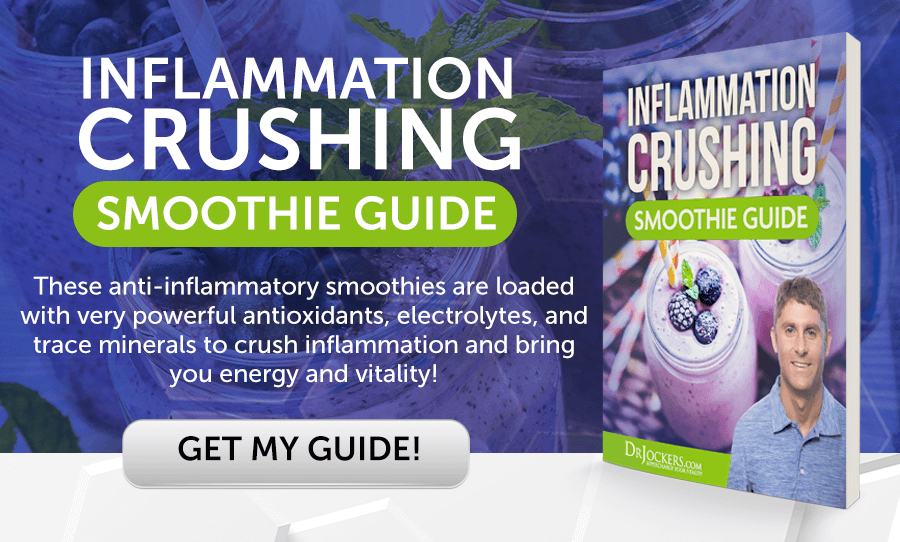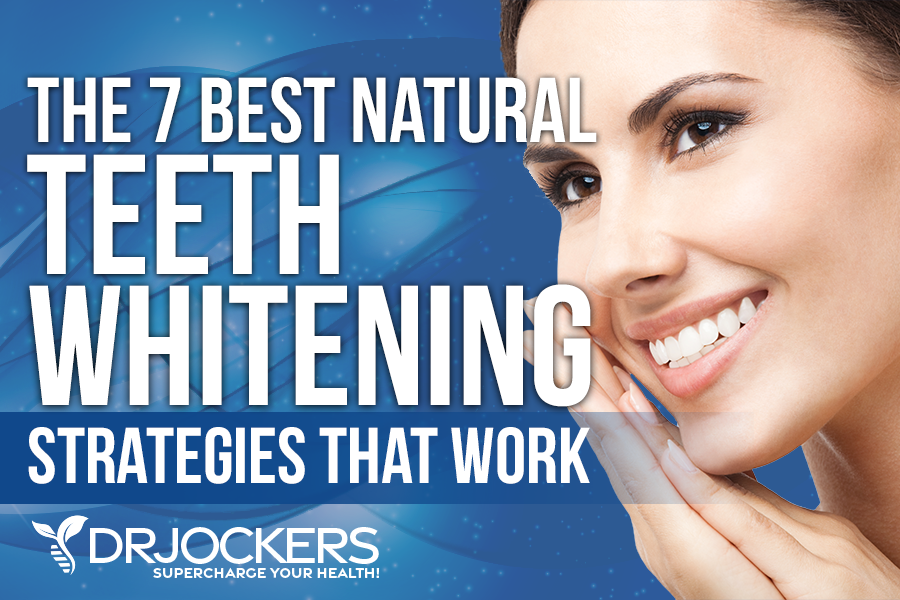 The 7 Best Natural Teeth Whitening Strategies That Work
The 7 Best Natural Teeth Whitening Strategies That Work
Do you want sparkling white teeth? We all do. Unfortunately, dietary, lifestyle, environmental, and health factors may lead to yellow teeth and discoloration. Conventional teeth whitening strategies can damage your teeth and risk your health. Instead, it’s better to rely on natural teeth whitening strategies to protect your oral and overall health.
In this article, you will learn about how and why your teeth become yellow. I will discuss problems with conventional teeth whitening products. I will offer my 7 best natural teeth whitening strategies, including a fantastic teeth whitening system that protects your teeth and oral health.
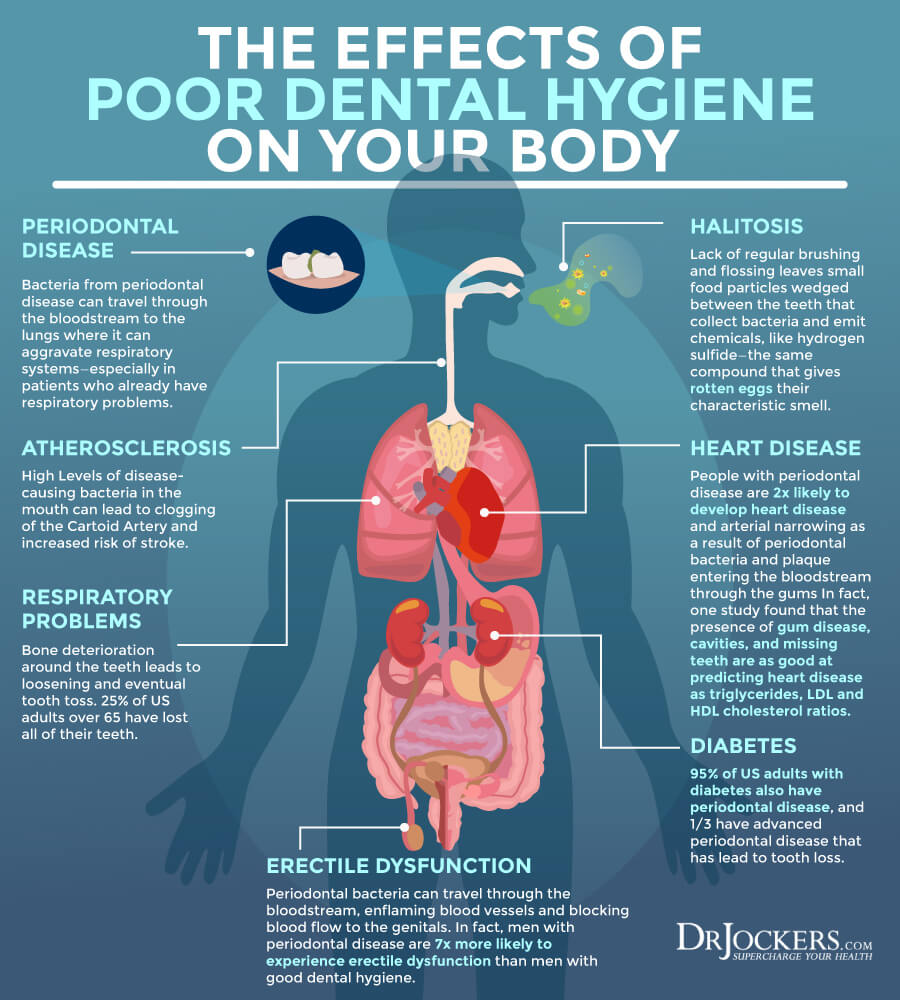
How Do Teeth Become Yellow
How do your teeth become yellow? There are a number of reasons your teeth turn yellow or stained. But let’s start with the structure of your teeth first. The white surface of your teeth is called enamel. Discoloration, such as yellowing or a brown or beige color, can impact this layer or deeper layers within the teeth structure.
Below the enamel, there is dentin, which is a pale brown substance. If the enamel becomes thinner, it can become increasingly visible, causing a discolored look. This is more common in older adults.
Erosive tooth wear or dental erosion from too much acid or chelation may lead to the chronic loss of dental hard tissues, which can cause enamel thinning and discoloration. Beyond that, there are many potential reasons, including genetics, age, food, lifestyle habits, and health factors (1).
Here are some of the most common reasons behind yellow teeth.

Poor Oral Hygiene
This is probably a no-brainer. Not brushing your teeth and not flossing your teeth regularly can lead to dental issues. It can lead to plaques and tartar buildup, which can also cause discoloration.
When you are brushing your teeth, you are also polishing it and reducing yellowing. Not doing a proper job may increase the risk of discoloration and yellow teeth.
Genetics
We are all born with different genes that affect how we look. This is no different for your teeth. Some people simply have naturally more yellow teeth than others. This means that your teeth may be naturally slightly yellower than most people’s.
It’s also possible that your genes may cause your teeth to be yellow and stain easier or yellow more prematurely. Fortunately, there are other factors you can influence and reduce a yellow appearance, even if your genes are part of the culprit.
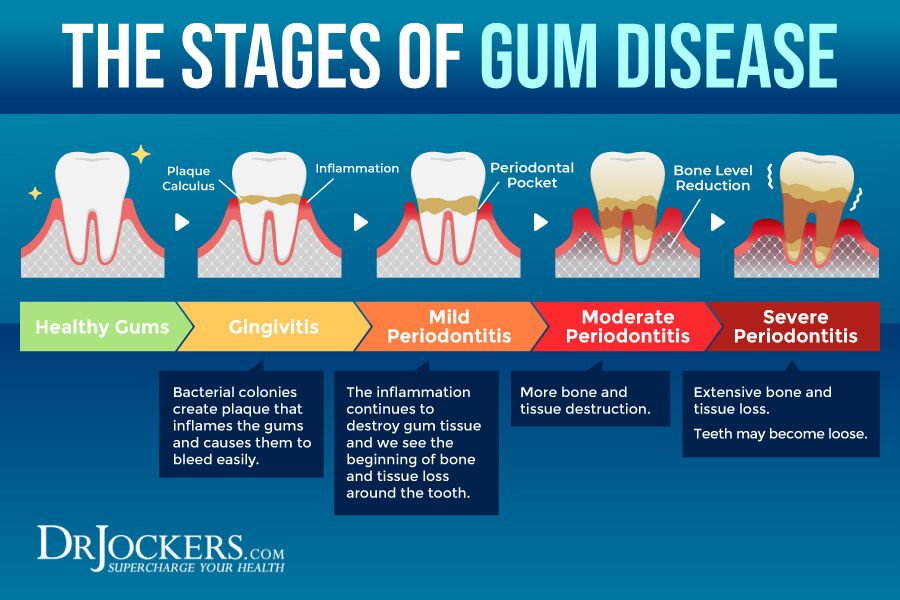
Age
Your teeth naturally have white protective enamel. As you age, this white enamel becomes increasingly thinner underneath this thin, white enamel hide underlying dentin, which has a pale yellow color.
As the enamel thins, the pale yellow dentin will increasingly show through, increasing a yellow appearance. This may mean that as you get older, your teeth may look more yellow.
Smoking
Smoking cigarettes is a very common issue with yellow teeth and other dental issues. Nicotine can lead to both discoloration and bad breath. It may also increase the risk of tooth decay, gum disease, tooth loss, and oral cancer.
Dental issues are not the only risk of smoking cigarettes, so it’s important that you quit smoking or, if you are not a smoker, don’t start. Be aware that chewing tobacco can also cause yellow teeth.
Certain Food and Drinks
Certain food and drinks can cause discoloration and yellowing of your teeth. Drinking coffee, tea, wine, coke, sodas, and sugary drinks are common beverages that can share your tooth enamel. Chocolate, starchy food, curry, food with tomato sauce, soy sauce, balsamic vinegar, and some other foods may also do the same.
These foods and drinks can leave color particles on your teeth that will eventually penetrate and affect your tooth enamel causing yellow, discolored, or dull-looking teeth. Berries and beets may also cause discoloration though not yellowing, and generally only temporary.
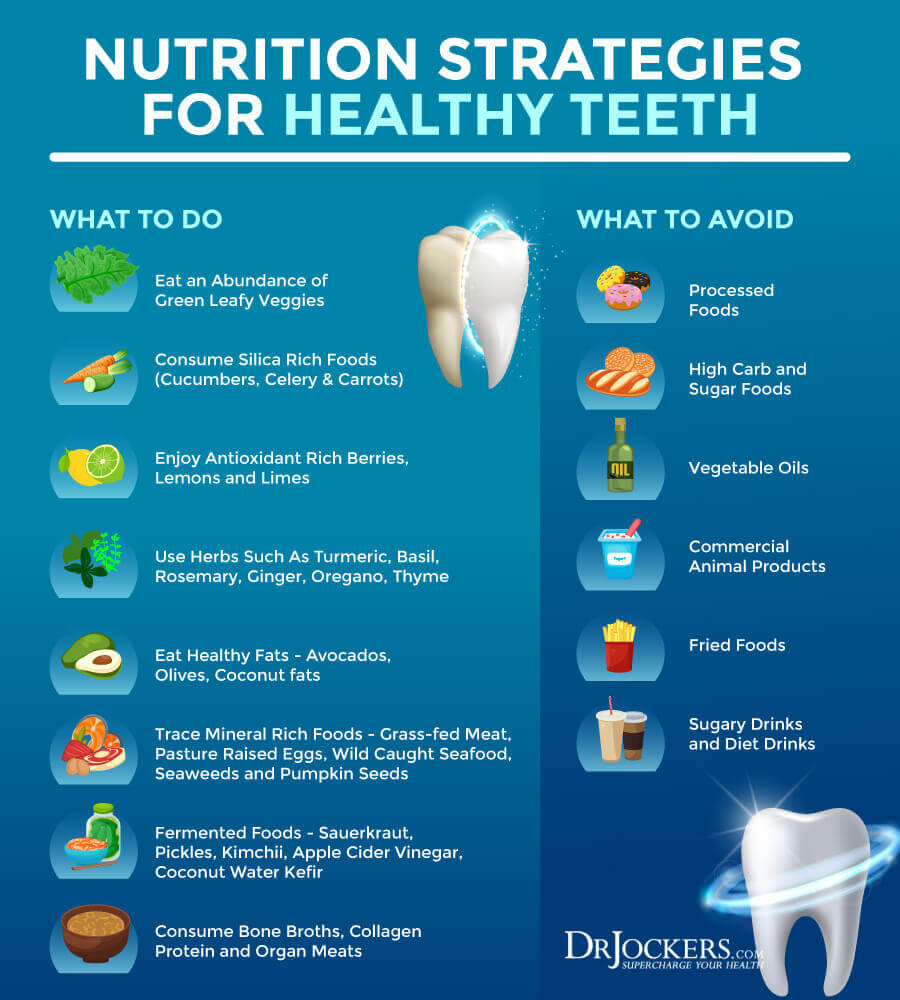
Health Issues
Certain diseases may prevent normal tooth enamel or dentin development, which can increase tooth discoloration and yellow teeth. Chemotherapy and radiation, especially when directed at the neck or head, may also increase teeth discoloration and dental issues.
Certain infections in pregnant women may also negatively impact the enamel development in the growing baby and cause discoloration.
Medication
Certain medications, including antihistamines, antihypertensive drugs, and antipsychotics, may also increase your risk of yellow teeth and discoloration. Chlorhexidine, cetylpyridinium chloride, and some other ingredients in mouthwashes, mouth rinses, and other dental products may also cause teeth staining.
Antibiotic use may also increase the discoloration of your teeth.
Dental Materials
Silver sulfide-containing materials and other amalgam restorations may also cause discoloration. Though this tends to cause a gray-black cast to your teeth, it may also increase yellowing.
Silver fillings have many health risks, so it’s best to avoid them or, if you have them, get them removed by a biological holistic dentist.
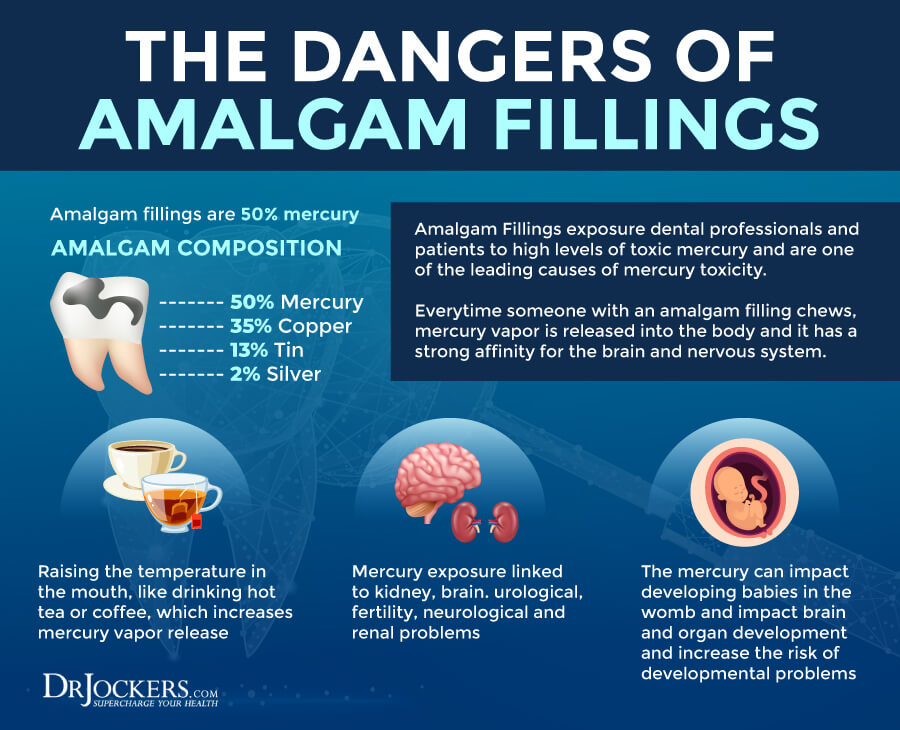
Dry Mouth and Mouth Breathing
If you are dealing with dry mouth, it may be that your mouth is also lacking saliva. Saliva offers protection to the enamel. Without this protection, there may be an increased risk of discoloration.
Breathing through your mouth and/or dealing with blocked nasal passages may also reduce the saliva in the mouth. This prevents the moisturizing of your teeth and mouth from increasing discoloration. Here is a helpful article on how to improve your nasal breathing.

Trauma
Physical trauma, such as hitting your teeth or mouth, can lead to discoloration. If this happens before age 8, it can disrupt enamel formation.
But even during adulthood, it can disturb and reduce blood flow to the tooth. Sports injuries and other trauma impacting the teeth may even cause the nerves to die. This can lead to discoloration of the teeth.
Environmental Factors
Environmental factors may also play a role in yellow teeth and discoloration. Too much fluoride from high-fluoride municipal tap water or the excessive use of fluoride-treated conventional toothpaste and rinses or other fluoride dental applications may lead to fluorosis, which may cause white spots on your teeth.
Environmental toxin overload may also impact the color and health of your teeth and oral health.
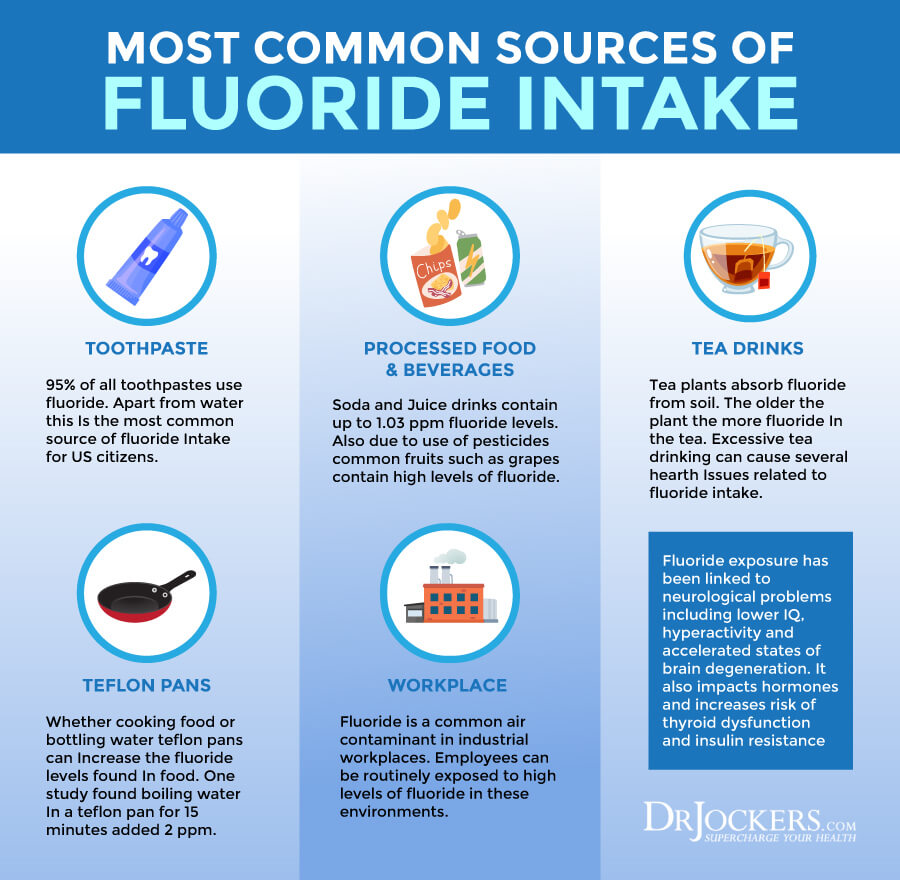
Problems with Commercial Teeth Whitening
Commercial teeth whitening products, including whitening strips, gels, and toothpaste, are widely used in the United States for nicer-looking, whiter teeth. However, these commercial teeth whitening products can damage your teeth and dental health.
These products can remove too much enamel making your teeth weaker. As you know, less enamel may even lead to more dentin showing through, which can actually cause discolored-looking teeth. Commercial teeth whitening strips and other teeth whitening products on the market tend to contain a gel.
The active ingredient of this gel is called carbamide peroxide, which breaks down into hydrogen peroxide and urea, which is a waste product. Regular application of these teeth whitening strips can lead to an erosion of the enamel. This may result in tooth sensitivity to acidic foods, hot and cold liquids, and other foods or drinks. They may also make your teeth weaker and more prone to damage too.

The American Academy of Cosmetic Dentistry claims that teeth whitening products are conventional dental offices and even most over-the-counter products are generally safe. However, they do state that they may lead to sensitivities (2).
However, with our culture’s obsession and borderline addiction to perfectly white teeth, the overuse of whitening strips, whitening products, and in-office whitening treatments causes issues with over-bleaching. Over-bleaching your teeth can lead to tooth damage and even root canals. By breaking down the enamel, it may make your teeth look translucent and unnatural. It may also cause your teeth to look bluer or blue-gray due to the dentin showing.
Using teeth whitening strategies moderately has fewer risks. However, these strategies still use chemicals that can be too hard on your teeth and have toxic effects on your body. If you are using any teeth-bleaching products, it’s important that you do this with the guidance of your dentist. Remember, results are always temporary.
Do not use them too often. If you are opting for any conventional options, it’s important that you feed your body with healthy, anti-inflammatory foods and take care of your dental health to reduce yellowing and discoloration. Avoid coffee, sugary, and other staining foods, and don’t smoke.
However, it’s safer for your health to choose natural and holistic strategies instead. You can learn more about the importance of holistic dental care by reading this article. In the next section, you can learn more about my favorite natural teeth whitening strategies that work.

Best Natural Teeth Whitening Strategies
When it comes to teeth whitening, you have to be careful, even with natural strategies. Some natural teeth whiteners can also damage the enamel, especially when used regularly.
For example, lemon peels are a great option for whitening. However, you have to be careful with the juice of the lemon. The juice is very acidic and may damage your teeth. It can be used for bleaching your hair or clothes or removing stains from your furniture.
It’s no surprise that lemon juice may be too much for your teeth and mouth gum. The acid from the lemon juice may lead to tiny holes in your teeth where staining or cavities can happen. Avoid using it regularly.
Another important tip when it comes to even natural teeth whitening is to go slow and gradual. If you are new to natural teeth whitening or a specific teeth whitening strategy, just go gradually. Use only a small amount as directed. Pay attention to your teeth, gum, and overall oral health. If you notice sensitivity or any symptoms, back off, it may not be the right strategy for you. Remember, healthy teeth and healthy oral health is the most important.
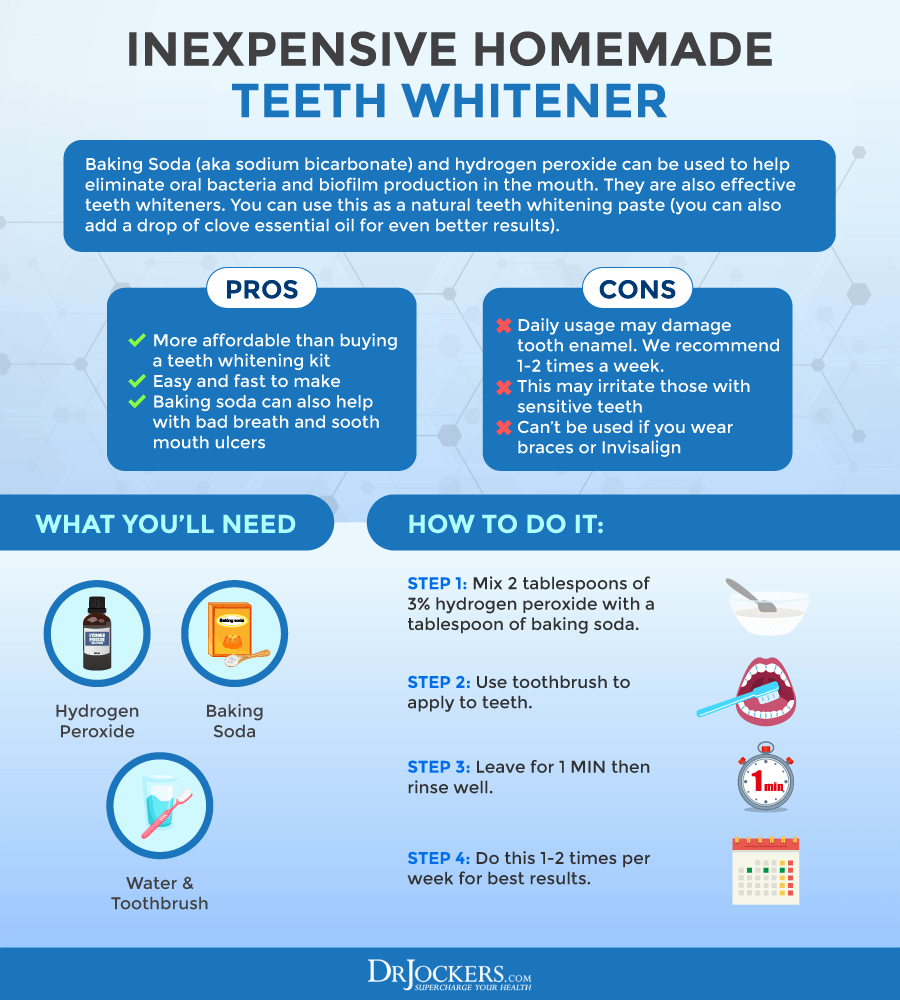
Salt Rinse
Doing regular salt rinses may help to give your teeth a natural whiter look. Salt may help to temporarily remove stains and reduce yellowing or discoloration. It may also offer antibacterial and antimicrobial effects, reducing inflammation, gum issues, and irritation. It may be a great option after dental work.
For a salt rinse, mix a teaspoon or pink Himalayan salt or Celtic salt with a cup of warm kettle-boiled purified water. Cool it down first before using it, then squish it around your mouth like you would with a mouthwash. It’s important to note that salt may also damage your tooth enamel if overused.

Brushing and Flossing
Brushing and flossing your teeth regularly is the best way to achieve healthy and naturally white-looking teeth. Use fluoride-free, natural, organic toothpaste. Brush and floss every morning and every evening.
Don’t forget about scraping your tongue with a tongue scraper to remove microbial overgrowth. Avoid smoking and foods and drinks that can stain your teeth.
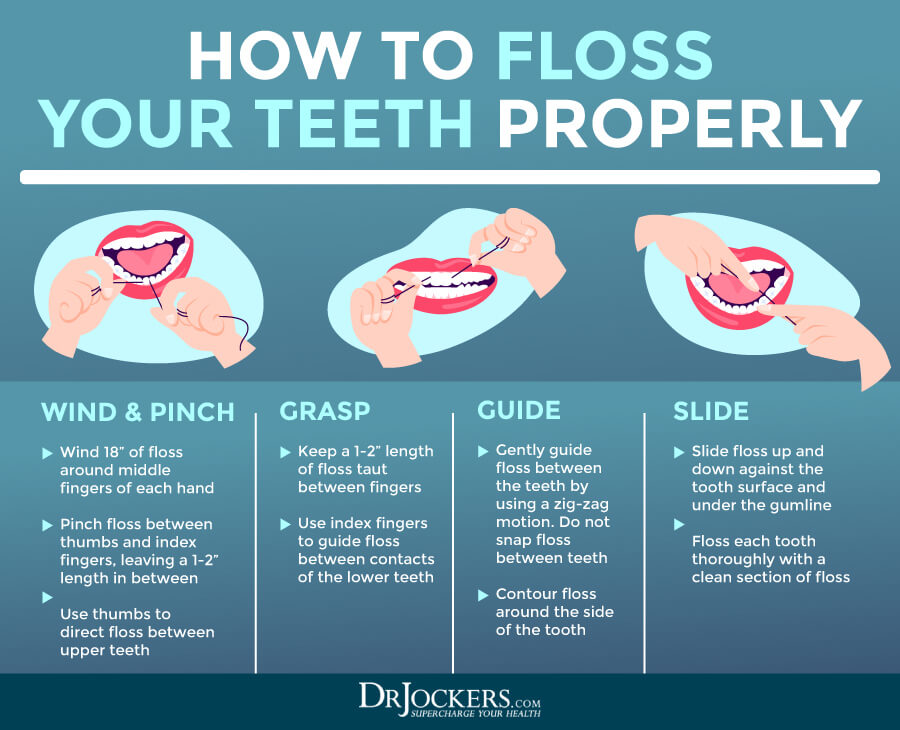
Oil Pulling
Oil pulling is another great option for reducing yellow teeth and discoloration naturally. It may also help to decrease bad microbes, inflammation, and the risk of infections and helps to ‘pull’ out toxins from your oral cavity. Coconut oil is a good source of lauric acid which may help to decrease inflammation and fight bacteria. It may help to reduce plaques and gingivitis, too (3, 4, 5).
I recommend oil pulling every morning before brushing your teeth. Ideally, use extra virgin coconut oil, though extra virgin olive oil can work too. Squish a tablespoon of coconut oil in your mouth for about 20 minutes. This is an excellent time for meditation, reflection, journaling, or grounding. Spit it out and brush your teeth carefully. I recommend using a different toothbrush after oil pulling than other times of the day as you are brushing away toxins.
Try adding certain essential oils, like clove oil, peppermint, and spearmint, to add some antimicrobial and anti-inflammatory benefits that can lower infections in your mouth. They are a great ingredient for natural, homemade mouthwash mixed with water. Remember, these three natural strategies are holistic dental care practices and natural preventative strategies that you can and should use daily at home.

Baking Soda and Apple Cider Vinegar
Using baking soda and apple cider vinegar is another great option. Baking soda or sodium bicarbonate (NaHCO3) is a natural substance used for all kinds of things, from baking to cleaning. It may also help to reduce bacterial plaques, decrease the risk of cavities, and help to whiten your teeth naturally.
Mixed with water, baking soda can help to improve the pH balance in your mouth, making it less acidic. You can mix baking soda with some water creating a paste to use as toothpaste to reduce cavity-causing bacteria to multiply in your mouth and whiten your teeth. It may be an effective and inexpensive way to naturally make the appearance of your teeth whiter and shinier (6, 7).
You may also try the “Keyes Technique” for better oral health and whitening. This strategy is the combination of baking soda and apple cider vinegar to create a strong chemical reaction that effectively eliminates plaque and resets the oral microbiome. This strategy was popularized by Dr. Paul Keyes, who is a former clinical investigator at the National Institute of Dental Research.
To try this strategy, you simply coat your teeth and tongue with baking soda using a toothbrush and then put 1 tsp of hydrogen peroxide or undiluted apple cider vinegar into your mouth. The combination of the alkaline bicarbonate from the baking soda with the hydrogen ions from the acidic hydrogen peroxide or vinegar creates a foaming effect in your mouth.
While your mouth is full of this foam, you brush your teeth, gums, and tongue. This technique may help to remove the hard to get rid of bacterial biofilms in the teeth, gums, and tongue and helps to whiten the teeth and eliminate bad breath. You can do this once or twice a week for great results.
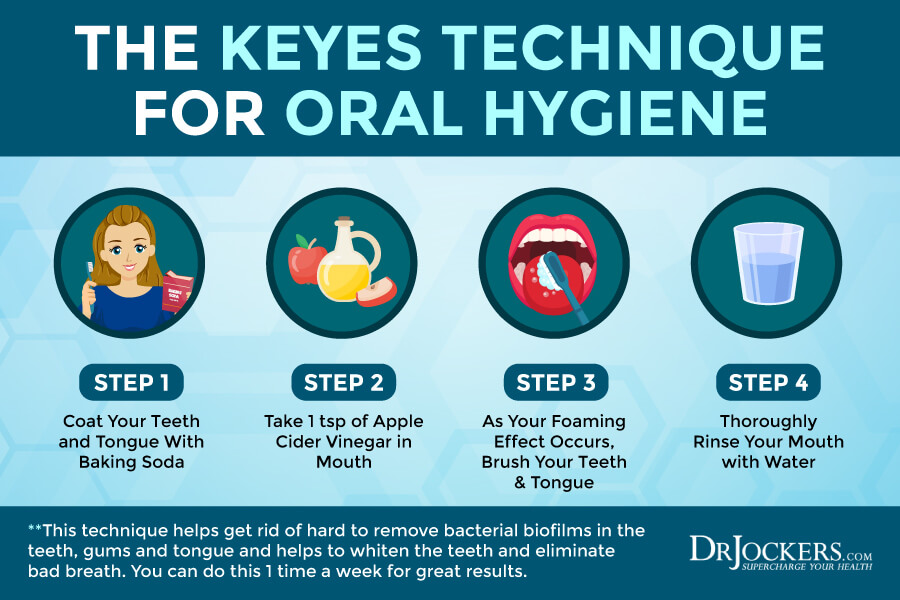
Nourishing Clays and Activated Charcoal
Nourishing clays and activated charcoal may also help to improve your oral health and whiten your teeth naturally. Bentonite and kaolin clay are two great nourishing clay. These clays and activated charcoal may support both detoxification and your overall oral health. They may help to remineralize your teeth with the help of magnesium, potassium, calcium, and silica. They may also help to whiten and polish your teeth.
Activated charcoal is a fine-grained black powder. It’s made from coconut shells, slowly burned wood, olive pits, peat, and other natural substances. It is commonly used to remove plaques, reduce toxins, and whiten teeth in natural dental care. You may mix it in with your baking soda toothpaste. It is also a common ingredient of many organic, natural toothpaste on the market.

Hydroxyapatite
Hydroxyapatite is a naturally occurring mineral that may help with whitening your teeth naturally. It may be a great option for creating strong, cavity-resistant teeth. It may be a great non-toxic alternative to fluoride.
It is also a desensitizing agent, which means it may help to reduce tooth sensitivities and improve whitening without causing sensitivity issues. It is microbiome friendly and doesn’t damage your enamel. It is non-toxic and safe for kids. It may help to lighten the shade of your teeth naturally (8).
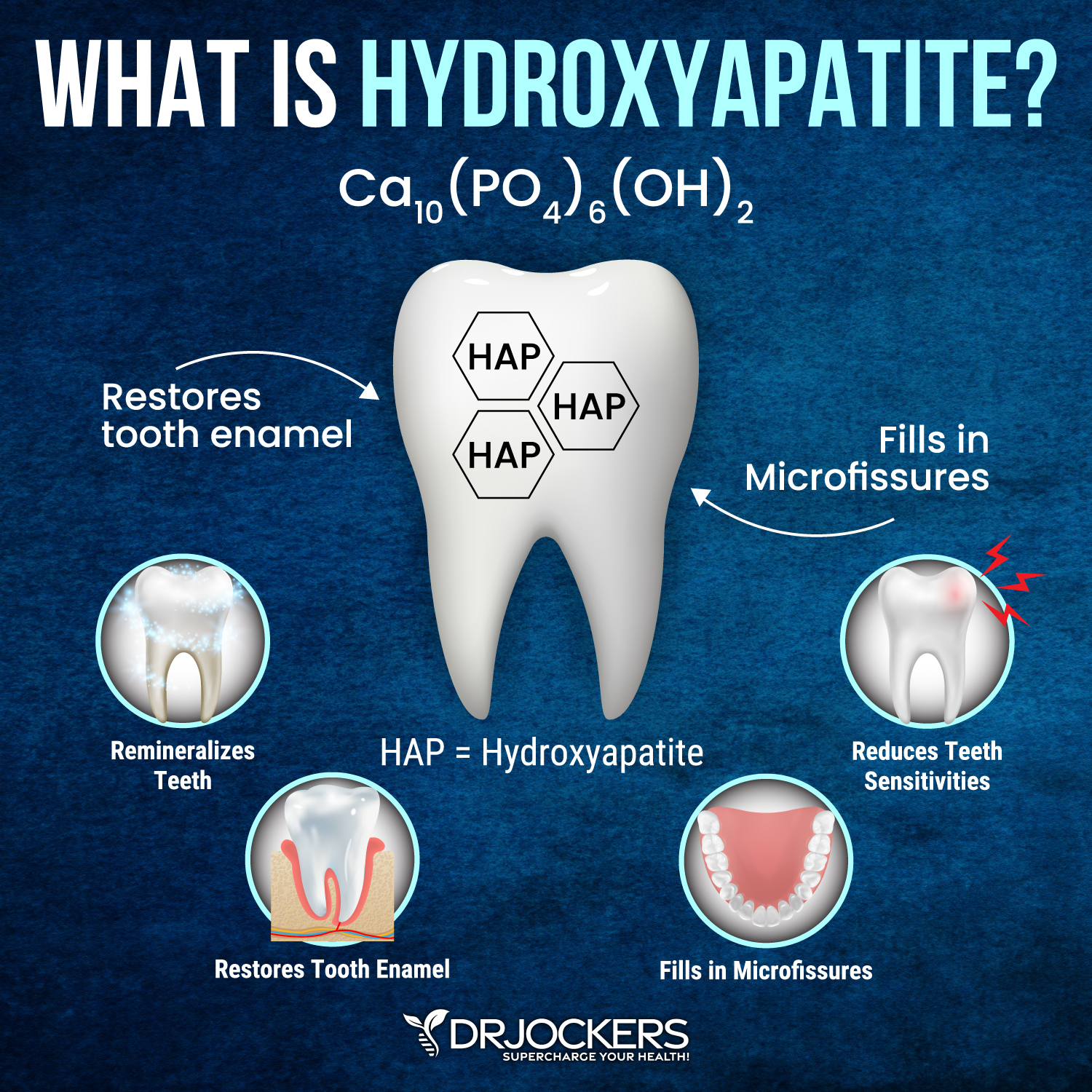
Red and Blue Light Therapy
Red and blue light therapy has been used in dental care for a while now. Blue light therapy helps to kill bacteria without harming your gum tissue. It may help to improve gum tissue deterioration, tooth decay, and bad breath. It doesn’t harm your enamel but can travel through it easily, fighting germs effectively while protecting your teeth. It also helps to whiten your teeth and reduce discoloration and yellowing (9, 10).
Red light therapy may help to reduce inflammation and teeth sensitivity. It may help to improve blood circulation, gum tissue growth and health, and bone growth and health. They both may help to fight bacterial overgrowth and inflammation in your mouth. Using blue and red light therapy combined may be great for whitening your teeth naturally and protecting your oral health (9, 10).
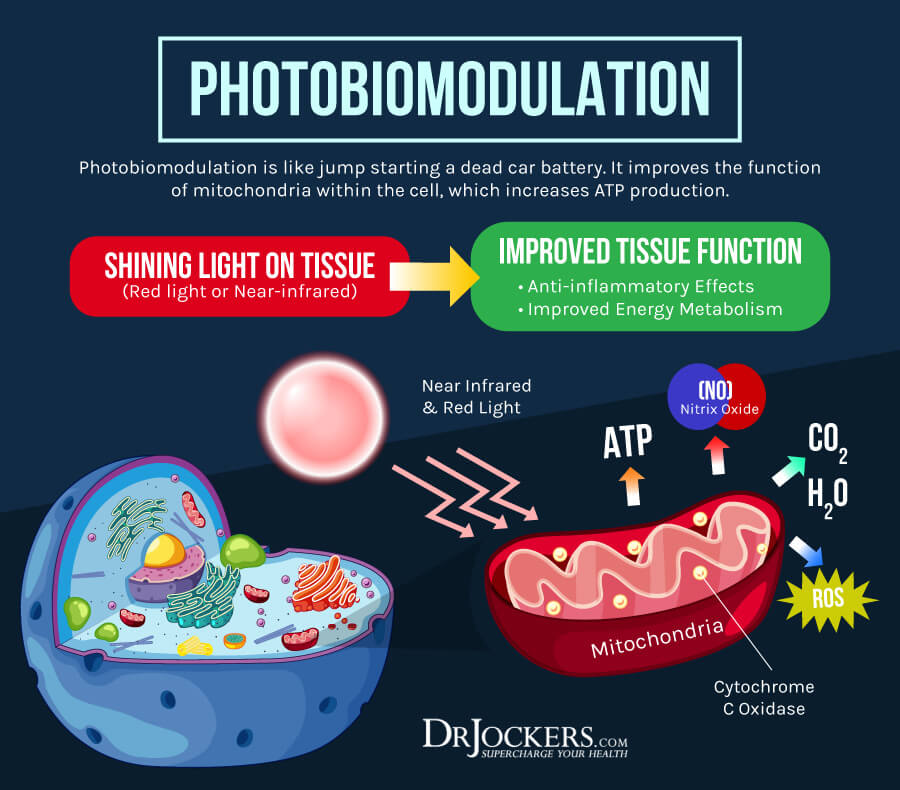
Primal Life Organics
I recommend Primal Life Organics V4 Life Teeth Whitening System for natural dental care and whitening your teeth naturally. This product helps you whiten your teeth naturally with the help of LED red light and LED blue light therapy, hydroxyapatite (HAp), phthalimidoperoxycaproic acid (PAP), clay, white activated charcoal, and olive oil. It helps to protect, demineralize, and rebuild your tooth enamel.
HAp is a great naturally occurring mineral that helps to create stronger teeth. PAP is a strong stain remover that doesn’t cause any damage but protects your teeth. Olive oil is full of cleansing, vitamin-rich, soothing, and whitening properties. The clays help to remove bacteria, strengthen your teeth, and support healthy gums.
Added essential oils help to reduce bacterial growth, promote fresh breath, reduce yellow teeth and discoloration, and promote white teeth. All you need is about 16 minutes to use this system to whiten your teeth and improve your oral health.
Final Thoughts
We all want sparkling white teeth. Unfortunately, conventional teeth whitening products can damage your teeth and harm your health. Choosing natural teeth whitening solutions is safer and better for your health. I recommend that you follow my best natural teeth whitening strategies for a nicer smile and better health.
I really like the Primal Life Organics V4 Life Teeth Whitening System as it is non-toxic, research based, and cutting edge in the world of teeth whitening systems. My wife and I use this personally and have seen great results. Try it out and see for yourself as they have a 1-year satisfaction guarantee.
Sources in This Article Include:
1. Cheng R, Yang H, Shao MY, Hu T, Zhou XD. Dental erosion and severe tooth decay related to soft drinks: a case report and literature review. J Zhejiang Univ Sci B. 2009 May;10(5):395-9. doi: 10.1631/jzus.B0820245. PMID: 19434767
2. Whitening. ADA. Link Here
3. Peedikayil FC, Sreenivasan P, Narayanan A. Effect of coconut oil in plaque related gingivitis – A preliminary report. Niger Med J. 2015 Mar-Apr;56(2):143-7. doi: 10.4103/0300-1652.153406. PMID: 25838632
4. Joshi S, Kaushik V, Gode V, Mhaskar S. Coconut Oil and Immunity: What do we really know about it so far? J Assoc Physicians India. 2020 Jul;68(7):67-72. PMID: 32602684
5. Woolley J, Gibbons T, Patel K, Sacco R. The effect of oil pulling with coconut oil to improve dental hygiene and oral health: A systematic review. Heliyon. 2020 Aug 27;6(8):e04789. doi: 10.1016/j.heliyon.2020.e04789. PMID: 32923724
6. Chandel S, Khan MA, Singh N, Agrawal A, Khare V. The effect of sodium bicarbonate oral rinse on salivary pH and oral microflora: A prospective cohort study. Natl J Maxillofac Surg. 2017 Jul-Dec;8(2):106-109. doi: 10.4103/njms.NJMS_36_17. PMID: 29386812
7. Stain removal and whitening by baking soda dentifrice. JADA Link Here
8. Steinert S, Kuchenbecker J, Meyer F, Simader B, Zwanzig K, Enax J. Whitening Effects of a Novel Oral Care Gel with Biomimetic Hydroxyapatite: A 4-Week Observational Pilot Study. Biomimetics (Basel). 2020 Nov 24;5(4):65. doi: 10.3390/biomimetics5040065. PMID: 33255509
9/ Maclean M, MacGregor SJ, Anderson JG, Woolsey G. Inactivation of bacterial pathogens following exposure to light from a 405-nanometer light-emitting diode array. Appl Environ Microbiol. 2009 Apr;75(7):1932-7. doi: 10.1128/AEM.01892-08. Epub 2009 Feb 6. PMID: 19201962
10. Steinberg D, Moreinos D, Featherstone J, Shemesh M, Feuerstein O. Genetic and physiological effects of noncoherent visible light combined with hydrogen peroxide on Streptococcus mutans in biofilm. Antimicrob Agents Chemother. 2008 Jul;52(7):2626-31. doi: 10.1128/AAC.01666-07. Epub 2008 Mar 3. PMID: 18316516
